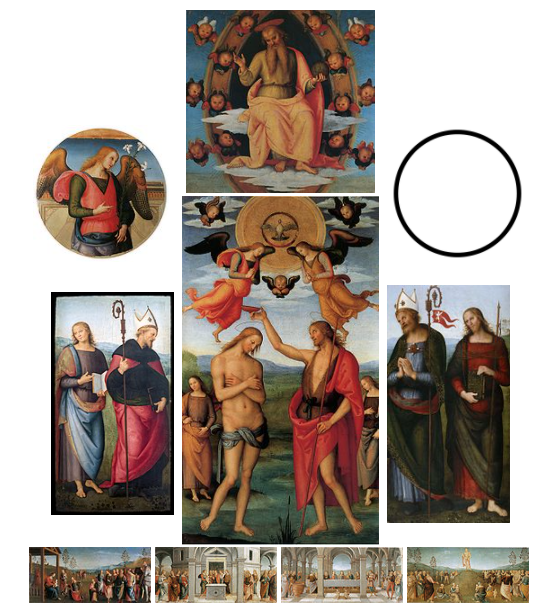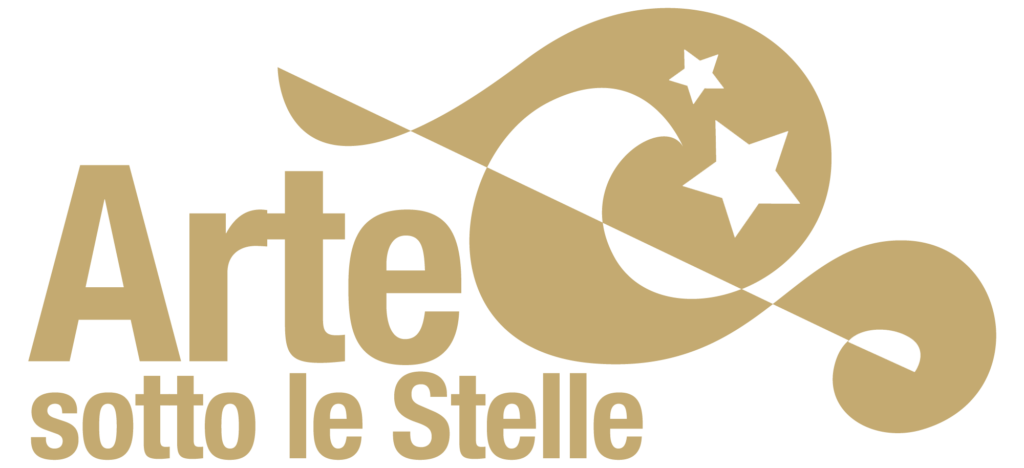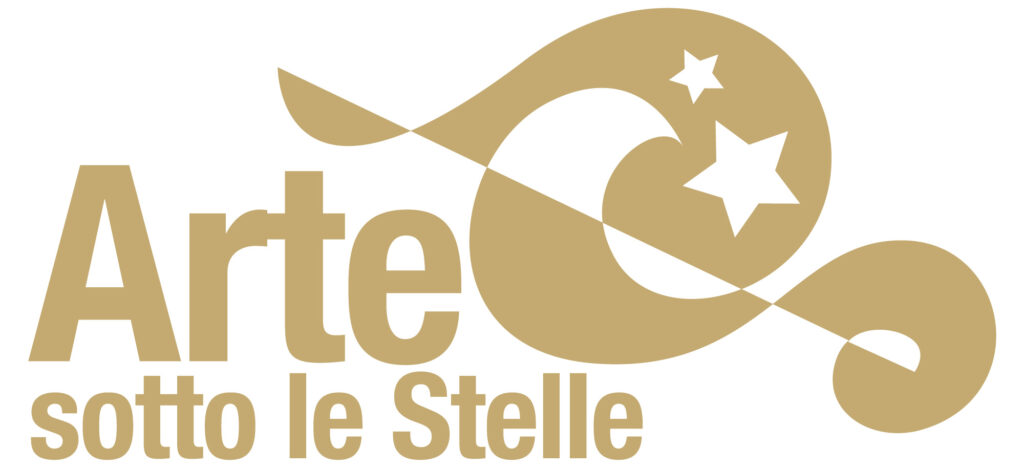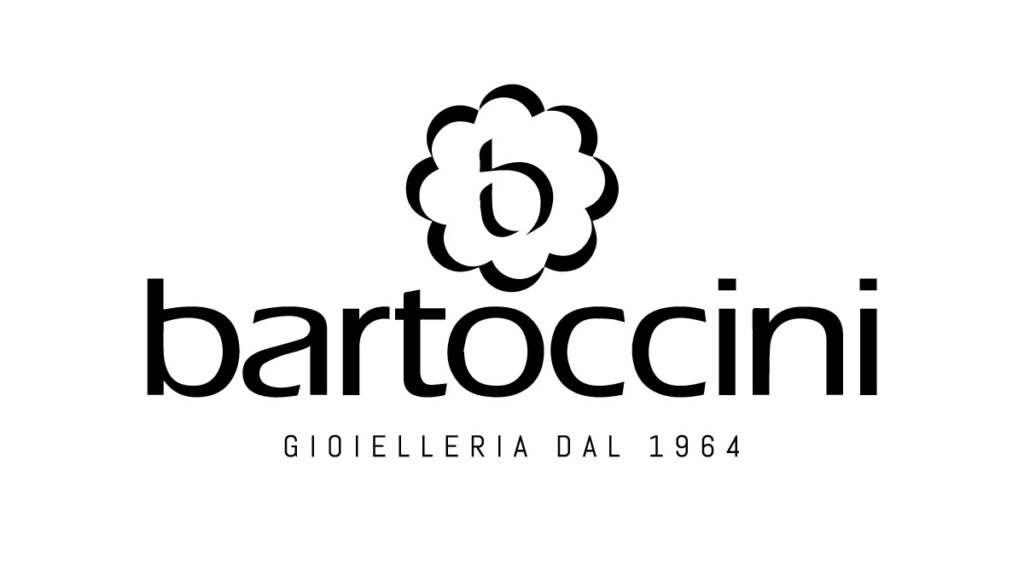Polyptych of Sant’Agostino – Perugia
The Polyptych of Saint Augustine is a large complex of tables (dismembered and partially lost) realized by Perugino and his assistants in two phases (1502-1512 and 1513-1523, the year of his death).
The large painting was originally conceived as an altarpiece for the church of Sant’Agostino in Perugia; in 1495, the Augustinian friars entrusted Mattia di Tommaso da Reggio with the construction of the two-sided wooden structure to house the paintings, which he completed in 1500.
In 1502, after agreeing on a fee of 500 scudi, Perugino was commissioned to realize the great pictorial cycle that included many panels.
The works probably began the following year, in 1503, and continued until 1512, when the activity was suspended after some misunderstandings between Perugino and the friars.
During the first phase of work, Perugino realized the panels conceived for the front of the structure, that is, the one facing the nave of the Church: the Baptism of Christ (central altarpiece) dates back to the decade 1502-1512, St John and St Augustine on the right and St Herculaneum and St James Major on the left, the Angel Annunciating and the Virgin (lost), and the tablets with episodes of life of Christ of the predella (the Adoration of the Magi, the Sermon of the Baptist, the Canaan Wedding and the Presentation of Jesus in the Temple).
In 1513, Perugino resumed the work, which continued until 1523, year of his death. The works for the back part, the one facing the choir of the friars, were then realized in that period: in the center there was the Adoration of the shepherds, flanked on the left by Saint Irene and Saint Sebastian and Saint Jerome and Saint Mary Magdalene on the right; in the upper register, on two tondos, a Young saint with sword (perhaps identifiable with St Julian) and St Bartholomew.
The panels for both cymatium also date to the second phase of works, the Eternal Blessing towards the nave and the Pietà towards the choir, surrounded on the sides by the tondos depicting the prophets David and Daniel.
The structure was divided into the two sides around 1654, and the Polyptych was completely dismembered in 1683.
During the period of the Napoleonic suppressions various parts of the Polyptych were also transported to France: the table of Saints Philip and Augustine is currently at the Musée des Augustins in Toulouse, Saints Herculaneum and James Major at the Musée des Beaux-Arts of Lyon, Saints Irene and Sebastian at the Musée de Grenoble and the Young Saint with a Sword at the Musée du Louvre in Paris; in addition, after several collecting passages, the Saint Bartholomew is now kept at the Birmingham Museum and Art Gallery, Alabama. The cymatium depicting the Piety is preserved at the Monastic Complex of San Pietro, while all the other panels are at the Galleria Nazionale dell’Umbria in Perugia.











